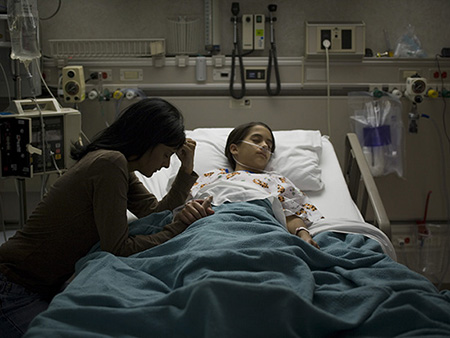 There is currently no consensus on what quality end-of-life care for children with cancer looks like, or how to measure and deliver it. However, investigators recently conducted an expert panel to help fill this void. In a study published online in CANCER, a peer-reviewed journal of the American Cancer Society, the panel endorsed 16 measures that cover different aspects of care that are important for children with cancer and their families.
There is currently no consensus on what quality end-of-life care for children with cancer looks like, or how to measure and deliver it. However, investigators recently conducted an expert panel to help fill this void. In a study published online in CANCER, a peer-reviewed journal of the American Cancer Society, the panel endorsed 16 measures that cover different aspects of care that are important for children with cancer and their families.
“Measuring the quality of care is an essential part of ensuring high-quality end-of-life care for all patients. Although there are numerous quality measures for end-of-life care for adults with cancer, there are zero for children with cancer,” said lead author Emily Johnston, M.D., assistant professor of hematology/oncology in the Department of Pediatrics at the University of Alabama at Birmingham.
Johnston and her colleagues selected a panel of individuals with expertise in pediatric and adult oncology, pediatric palliative care, social work, nursing, and hospice. The investigators provided the panel with information on 20 proposed measures derived from adult measures and interviews with bereaved parents whose child died of cancer.
After the panel members scored each measure and participated in discussions, they endorsed a set of 16 measures that covered four distinct aspects of care: avoiding medically intensive care at end-of-life; helping families achieve the location of death preferred for their child; advancing hospital policies and procedures for end-of-life care; and expanding supportive services for the child, as well as for parents and siblings.
“This is the first study to identify quality measures for end-of-life care for children with cancer. Some of the measures are similar to adult measures, like avoiding intubation at the end of life; but others are novel, such as assessing sibling needs at end-of-life,” Johnston said. “Therefore, it is essential that we have quality measures specific for children with cancer.”
The team noted that the measures need to be refined and validated with bereaved families before they can be applied as a tool to help standardize care.
Once validated, these measures may be useful for determining the quality of end-of-life care that different programs provide and for identifying disparities.
“For example, they will allow us to determine if Hispanic and Black children with cancer are receiving as high-quality end-of-life care as non-Hispanic white children,” Johnston said. “Once we have identified groups that are at risk of receiving poor-quality end-of-life care, we can develop targeted interventions to improve their care.”
An accompanying editorial notes that the study’s results may have implications for improving end-of-life care for adults as well. “This is an exciting time when more research will emerge to move end-of-life care forward in a way that can serve all patients and families better,” the authors wrote.